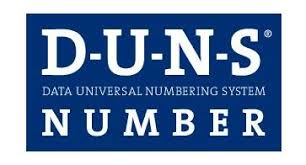Data Warehousing
What is Data Warehousing?
Data warehousing meaning can be defined as the process of storing huge amounts of data electronically by some organization or business. Data warehousing serves to be a vital component of BI (Business Intelligence) known for employing advanced analytical techniques on relevant business data.

The data warehousing concept was introduced during 1988 by researchers from IBM –namely, Paul Murphy and Barry Devlin. The importance of warehousing, data came up as computer systems started becoming more complex while handling increasing amounts of data on a daily Basis.
How Data Warehousing Works?
Data warehousing is known to provide in-depth insight into the company’s performance by ensuring the comparison of data that has been consolidated from various heterogeneous sources. A typical data warehouse is known to be designed for running queries and proper analysis upon historical data that has been derived from multiple transaction sources.
Once you have incorporated data into the warehouse, it is not known to change. Moreover, the data cannot be altered as well. This is because a data warehouse is known to run analytics on the events that have occurred already. This is achieved by focusing on the modifications in data over time. Data that is warehoused it expected to be stored in a way that turns out secure, easy to retrieve, reliable, and easy to manage.
Towards the creation of a data warehouse, there are several steps involved. The first step is referred to as data extraction. The given step is known to involve collecting huge amounts of data from various source points. Once the data has been compiled, it is known to go through the process of data cleaning. It is the process of combing the given data for identifying errors and excluding or correcting any errors that might be found.
The data that is cleaned up is then converted from the database format to the respective warehouse format. Once the same is stored in the warehouse, the data is known to go through the process of sorting, summarizing, consolidation, and so more. The same is done to ensure that the existing data is coordinated and simpler to use. With time, more data gets added to the given warehouse as multiple data sources get updated.
Data Warehousing Vs. Databases
Most tend to confuse data warehousing with database management. However, it is important to understand that data warehousing is not the same concept as that of maintaining a database. A database serves to be a transaction system for monitoring and updating real-time data for delivering access to the most recent data. On the other hand, a data warehouse gets programmed towards aggregating structured data over an extended period of time.
Talk to our investment specialist
For instance, a database might only feature the most recent address of some consumer. On the other hand, the data warehouse is known to feature all the addresses at which the consumer might have lived for past several years.
All efforts have been made to ensure the information provided here is accurate. However, no guarantees are made regarding correctness of data. Please verify with scheme information document before making any investment.










